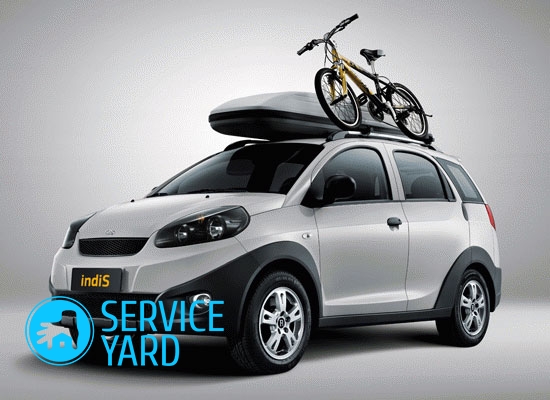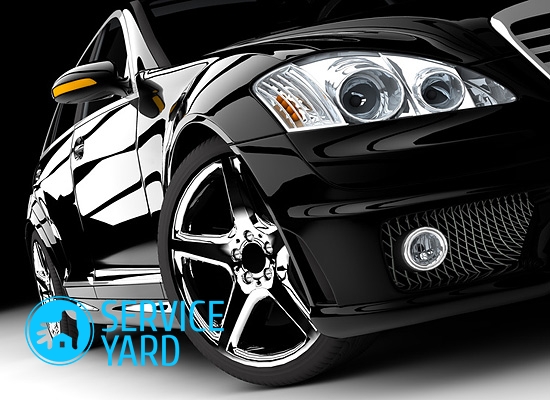Rust remover for cars

- The basics of car corrosion protection
- Types of rust
- How and what can be protected from rust?
- Where to carry out anti-corrosion treatment?
- How to choose an effective rust remedy on a car?
- How to carry out repeated anti-corrosion treatment?
- Car rust remover
- How to neutralize rust?
- Useful Tips:
- Stock footage
The body of the car is its “face”, and over time, under the negative influence of the environment, it, like all parts of the car, undergoes changes. This process can be accelerated by insufficient care, as well as ignoring special means for anticorrosion treatment. Today we will talk about what methods of eliminating corrosion should be used, and which rust remedy for cars is the most effective.
to contents ↑The basics of car corrosion protection
All car owners know that it is quite difficult to deal with metal rust, and you need to do this in a timely manner, preventing its spread. To prevent corrosion and protect the car body, it is necessary from the very beginning of the operation of the machine to use special means from rust. In this case, it is necessary to adhere to fairly simple but important rules:
- The surface intended for processing must be prepared.
- Corrosion inhibitor must be applied correctly.
- Correctly observe the polymerization regime, that is, the temporary and temperature conditions for the process of converting the product into a protective film.

If you qualitatively perform anti-corrosion treatment of the car, adhering to the above and the following rules, then rust will not bother your four-wheeled pet for a long time.
Types of rust
Corrosion as a process is divided into two varieties:
- Chemical. It occurs as a result of the destruction of the metal under the influence of various oxidizing agents: oxygen compounds or just oxygen.
- Electrochemical. This destruction process is caused by an electric current, which is formed due to the interaction of the metal with electrolytes.
to contents ↑Important! Electrolytes and oxidizing agents are substances that surround us from all sides. These include hydrogen ions, water, oxygen, dissolved in water.
How and what can be protected from rust?
There are many ways to protect against corrosion. These are electrochemical protection, galvanization, passivation and other methods. However, for mass production, all of them are unprofitable, so all kinds of varnishes, enamels, primers, which serve as a metal insulator from aggressive environmental influences, are becoming increasingly popular. The most common helpers in the fight against rust are anticorrosive agents (anti-corrosion agents).
All anti-rust vehicles are divided into 2 main groups, depending on the location and location of processing:
- For external surfaces. Under external surfaces are meant those that are directly in contact with the sand, stones flying from under the wheels. These include: underbody, sills, wheel arches. For these parts, elastic coatings are used - mastics made on the basis of compounds of polymers, rubber and bituminous resins. Apply them, usually with a spray or brush.
- For hidden surfaces of the car body. The internal surfaces of body parts are treated with agents on a different basis - wax or oil.These substances in their consistency are more liquid than anti-gravel ones, capable of filling small cracks, neutralizing the already appeared rust.
to contents ↑Important! Hidden metal areas must not only be treated with anticorrosive materials, but also periodically remove moisture from their cavities using special drainage holes.
Where to carry out anti-corrosion treatment?
Rust remedies are used for cars in several ways:
- In the service workshop. This method will save you time, in addition, specialists will carry out complex processing of the machine. In the process of talking with the receiver at the service station, find out what means are used at the station and how they are applied. Also, be sure to find out the composition of the substances and the degree of their adhesion to the metal, as well as the possibility of neutralizing the already appeared rust.
- Personally. In this case, be careful when choosing a rust inhibitor for a car and application method. A technical problem may also be the lack of a private garage with a pit and the necessary conditions for high-quality processing.
to contents ↑Important! Processing is carried out in 2 stages:
- Using a brush, treat the underbody with a brush.
- Work on the inside.
How to choose an effective rust remedy on a car?
Today, the choice of modern anti-corrosion agents is very wide. All of them are divided into groups and types, depending on the nature of the surface being treated and the desired result. Consider the most common and popular tools.
Slate mastic
This tool is used to process the outer sides of the wheel arches, as well as the bottom. As a result of processing with this tool, a bitumen film is formed, which provides complete waterproofing of open areas of the body. Slate mastic is used not only in car service, but also in construction, as well as in everyday life.
Rubber-bitumen mastic
This tool also processes the bottom and wheel arches of the car, but in this case, from the inside and outside. Mastic effectively protects against “bombing” of gravel and stones, and is also well resistant to low temperatures. It is able to withstand frost up to -60 C.
The polymer-bitumen layer is quite flexible and practically does not deform, so you can not be afraid of its peeling or cracking. If you are actively using the vehicle in cold weather, then masticing the vehicle with mastic is imperative.
Bitumen-rubber mastic

With this tool, it is necessary to protect both external and internal surfaces, including those that are not covered with paints and varnishes: underbody, threshold, arches, inner surfaces of the trunk, hood, wings and floor of the passenger compartment.
Movil
Effective rust control agent. In addition to the above parts, Movil will also reliably protect the joints and joints of the elements of the car body.
The product has high penetrating characteristics and, thanks to them, quickly and well spreads, forming a special mask-like layer. It displaces moisture from metal surfaces, which becomes the cause of the rapid destruction of the material.
Important! Movil can be additionally used for metal processing after applying other means. There are a lot of varieties of moviles: silicone, rust-converting and others.
Threshold Auto Preservative
This rust remedy for cars is used not only to protect thresholds, but also for the treatment of doors, side members, pillars and other details. The car preservative effectively protects parts from the aggressive effects of oxidizing agents.
Also, the tool is effective for temporary protection of the bottom, wheel arches and paint at the joints. The substance can be applied after pre-coating various surfaces with preservative compounds.Threshold compositions are not afraid of moisture and rust that has appeared - the car preservative successfully fights with them, delighting the car owner.
Antigravel
The tool is available in two colors (black and gray) and protects the body in those places that are most susceptible to destructive abrasive attacks, in particular, wheel arches, spoilers, sills, doors.
Antigravel is a texture coating that is made on a rubber basis using resins and bitumen. This tool protects the car not only from moisture and rust, but also from road salt and pebbles flying out from under the wheels.
to contents ↑Important! At the request of the owner of the machine, sulfur and black gravel can be painted on top with paints of various colors.
How to carry out repeated anti-corrosion treatment?
When re-processing anticorrosive, it is necessary to remember some of the subtleties associated with it. In particular, the treatment with “wax with wax” or “mastic with mastic” is useless and pointless, since if there is a corrosion center under the first layer of the product. The second, a new layer of anicor, simply will not get to it, which means that the moisture in the focus will continue its destructive activity.
Therefore, for reprocessing, choose oil-based products - the composition of the substance will allow the product to reach the source of the problem, even through a layer of another drug.
to contents ↑Car rust remover
There are many improvised means with which you can remove rust. But they are suitable only if the stain is not on metal or it has a small diameter. To remove corrosion from metal, it is necessary to use special tools that eliminate rust.
There are two proven ways to get rid of rust.
Mechanical
First of all, determine how deep the rust penetrated the paintwork:
- If the defect is small, then coarse sandpaper can be used, gradually reducing its granularity during grinding.
- If the damage area is significant, then use a special machine or a metal brush.
Chemical

This method involves the use of special tools that can dissolve rust or turn it into a film. It is enough to put the converter on top of the damaged areas, and after a while (indicated in the instructions) just wash off along with traces of corrosion. After applying the substances and getting rid of corrosion, you can start processing the car body.
Important! Most often, special products contain orthophosphoric acid, which can be purchased either in specialized stores, or use it as a solvent for rust. Cons of using such a tool: phosphoric acid in place of rust can trigger chemical processes that remove not only rust, but also the oxide layer that protects the metal. As additional chemical agents, such materials can sometimes be used:
- Lactic acid, which converts rust to salt.
- Zinc chloride is a substance that, when mixed with water in an acidic environment, effectively dissolves rust.
- Lemon juice.
- Vinegar.
- Kerosene.
Important! In addition to the above funds, you can use ready-made solutions purchased in specialized stores. Before using them, first test the product on an unnecessary body part, and use it only in strict accordance with the instructions.
The most common way to get rid of rust is to use a converter. There are a great many cans with such a liquid, and in addition to the rust conversion function, the tool performs a protective function.
The converter processes hidden areas of a car, in particular, door cavities, car thresholds, body elements, racks, joints of welded parts, etc. Chemicals created on the basis of film-forming substances are very popular. They are called primer converters.
How to choose a converter?
Different in composition converters interact with rust in different ways and are divided into the following groups:
- Primers-modifiers - are used as a base for paints and varnishes.
- Special stabilizers - to convert unstable iron oxides to more stable compounds.
- Penetration compounds that seal corrosion products have excellent penetration.
- Converters - turn corrosion into a sparingly soluble salt.
to contents ↑Important! All of the above funds have different viscosities. Therefore, for them there are various ways of applying to the surface. Apply them, depending on the composition and viscosity, as follows:
- Lubricate with a brush.
- Sprayed.
- Use jet spraying.
- Dip the item into the tool.
How to neutralize rust?
Performing the procedure for restoring the body from corrosion on its own is quite realistic. It is carried out in several stages:
- Clean body surfaces. This procedure can be performed using sandpaper, a special machine or sand. After processing, it is necessary to obtain a perfectly flat surface without any visible damage.
- Degrease the treated area with a special solution.
- Apply a special rust converter to the damaged area, following the instructions. Depending on the viscosity of the modifier, apply it to the surface with a brush or with a spray gun in a thin layer.
Important! All work with chemicals is carried out with gloves, since the basis of the transducer is acid, which is dangerous for the skin.
- After corrosion is converted to gray phosphate, rinse off excess.
- Dry the treated surface.
- Apply a primer coat.
- Coat the treated surface with paint or varnish.
to contents ↑Important! Paint must be done as quickly as possible so that the treated surface does not interact with air and does not oxidize. Otherwise, corrosion processes will begin to develop in it.
Useful Tips:
- Grind small sections of the body with emery paper dipped in white spirit.
- In order not to damage the area of the paintwork, which is not subject to corrosion, when grinding, pre-glue it with masking tape.
- Instead of a converter, you can use a solution prepared from the following ingredients: Mix 2 l of water with 15 g of baking soda and add a pinch of citric acid. With this solution, treat the surface, and then rinse the area with plain water.
- Use a dishwashing detergent instead of a factory degreaser.
- If the damaged area is small, then use a special pencil for staining.
- To match the tone of paint on the treated area with the car paintwork, be sure to consult with a specialist when choosing a product.
- Follow the instructions for using the product you have chosen, as some preparations can only be applied to a dried surface, while others, on the contrary, to a damp one.
Stock footage
The process of eliminating corrosion, although not complicated, however, beginners will not always be able to identify all the foci of damage and treat them so efficiently and efficiently that rust never appears. Therefore, if there is such an opportunity, it is better to contact the specialists of the service station, because sometimes special equipment is needed to handle inaccessible places or serious damage. We hope that the information received and the listed rust remedies will save you from the problems of corrosion, and your four-legged friend will serve for many more years.
- How to choose a vacuum cleaner taking into account the characteristics of the house and coatings?
- What to look for when choosing a water delivery
- How to quickly create comfort at home - tips for housewives
- How to choose the perfect TV - useful tips
- What to look for when choosing blinds
- What should be running shoes?
- What useful things can you buy in a hardware store
- Iphone 11 pro max review
- Than iPhone is better than Android smartphones



